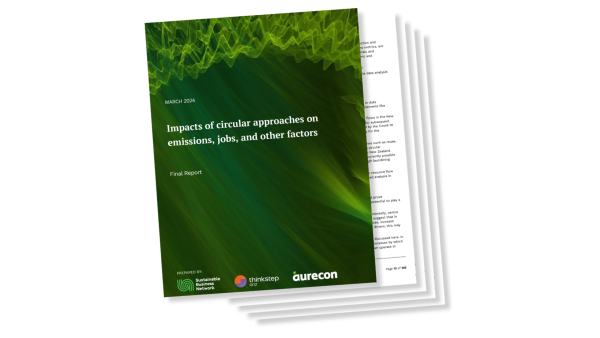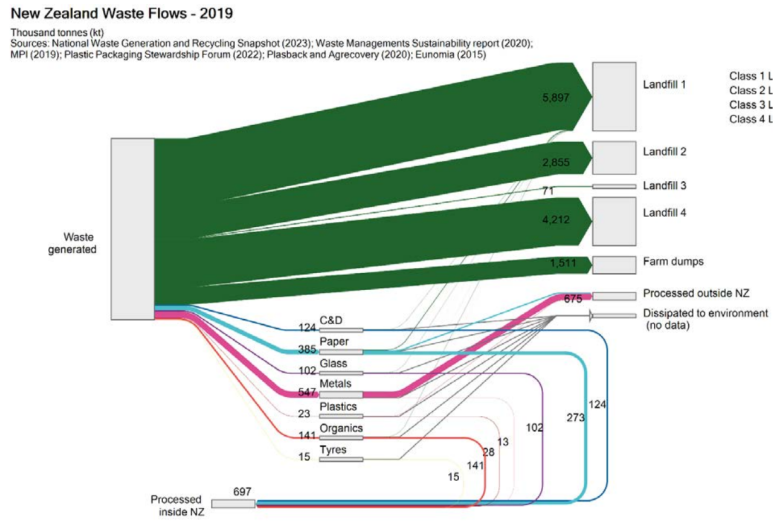We’re excited about the publication of this report Impacts of circular approaches on emissions, jobs, and other factors, developed for the New Zealand Ministry of Business Innovation and Employment (MBIE) in collaboration with the Sustainable Business Network and Aurecon. Our Head of Circular Economy Jim Goddin highlights these six takeaways.

1. Opportunities to reduce greenhouse gas emissions
The circular economy opportunities we identified could reduce annual emissions by 1.5 - 1.9 Mt CO2e. This would be a 2.7% to 3.4% reduction in 2021’s net emissions, with more significant reductions longer term.
2. Economic growth and job creation
Transitioning to a circular economy can enhance GDP and create job opportunities. Sectors such as recycling, remanufacturing, and sustainable agriculture would benefit from this shift. For example, moving to shared-use models and local repair services could grow economic resilience, significantly reduce greenhouse gas emissions and generate jobs.
3. Resource-efficient buildings and infrastructure
New Zealand sends 8.5% of its produced and imported goods to landfills, and construction is a significant contributor. Improving material efficiency, designing for durability, reducing unnecessary building components, and using reused, recycled, and renewable materials can lower emissions and enhance sustainability.
4. Innovations in sustainable agriculture
New Zealand's meat and dairy exports rely heavily on imported feed and fertilisers and use a lot of water. Short-term opportunities exist to minimise environmental impact, boost local industries, and reduce reliance on imports. This can be achieved by putting in place technologies to manage water and conservation, using organic and locally sourced fertilisers, and managing pests in an integrated way.
5. Critical materials and waste management
Our economic productivity relies heavily on imported technologies. Promoting service-based models, extending service lives, facilitating repair and reuse, and improving the way we separate and recycle critical minerals will help reduce demand, enable supply in response to increasing competition and market volatility, and support new jobs.
6. Low-carbon energy and transport
We rely significantly on imported oil and gas for our energy needs. We need to focus on developing local energy sources, such as renewables, and promoting smart transport.
A note on the Sankey diagrams in the report
Our report includes detailed Sankey diagrams, like the one below, that show how materials flow within New Zealand’s economy. These diagrams highlight how we consume resources and generate waste, together with opportunities to recycle.
The diagram below explains where New Zealand's waste ends up. The message is clear: a circular economy can not only reduce waste. It can also help New Zealand use resources so much better in the first place.

Read the full report: Impacts of circular approaches on emissions, jobs, and other factors | Ministry of Business, Innovation & Employment (mbie.govt.nz)